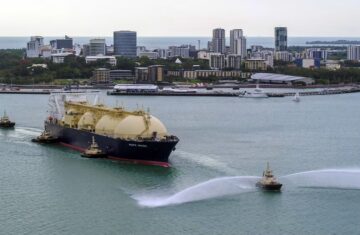A groundbreaking discovery is emerging beneath the North Sea, offering a renewable energy source that could reshape Europe’s power sector. Instead of traditional petroleum or fishing resources, advanced wind energy technology is paving the way for hydrogen production, positioning the North Sea as a vital player in Europe’s clean energy future.
The North Sea boasts optimal conditions for offshore wind farms, with its reliable and powerful wind patterns expected to generate approximately 300 GW of power in the near future. This energy will significantly enhance electrolytic hydrogen production, which involves using commercial water electrolysis to create clean hydrogen and oxygen from water.
Hydrogen is emerging as a crucial element in Europe’s energy transition. Its renewable production methods promise to reduce greenhouse gas emissions while bolstering energy security. With zero carbon dioxide emissions during usage, hydrogen stands out as an ideal solution for achieving environmental sustainability.
The North Sea’s wind resources will provide the electricity needed for electrolysis, ensuring that all produced hydrogen is environmentally friendly. The shallow waters of the region, combined with existing infrastructure, help lower the costs of installing and maintaining wind turbines.
Recent technological advancements, such as the Windcatcher—a floating turbine system designed to improve wind energy collection—are expected to enhance the efficiency and production capacity of hydrogen manufacturing. These innovations, alongside established offshore wind farms, could position the North Sea as a leading supplier of green energy.
However, the path to achieving Europe’s ambitious hydrogen production goals is fraught with challenges. As the region aims to implement green hydrogen facilities by 2030, only minimal planned capacity has moved beyond the initial stages. Regulatory hurdles, high costs, and logistical issues pose significant barriers to progress.

Collaboration among multiple nations is essential to navigate varying industrial regulations and priorities. Achieving coordinated goals requires substantial investment and effort from governments and industries alike.
Despite these obstacles, Europe has the potential to become a global leader in hydrogen production. By effectively combining strong offshore wind farms with stable government support, the continent can spearhead the transition to green energy.
The North Sea’s extensive offshore wind capabilities, coupled with established electrical production facilities, make hydrogen development increasingly feasible. By leveraging its natural advantages, Europe can reduce its dependence on fossil fuels and significantly lower carbon emissions.
While challenges remain in expanding hydrogen production, the advantages of harnessing the North Sea’s potential far outweigh the difficulties. With strategic investments in hydrogen technology and effective policy decisions, Europe can establish itself as a global authority in hydrogen energy production. This transformation would not only enhance European energy independence but also create new economic opportunities and drive advancements in sustainable energy technologies.



